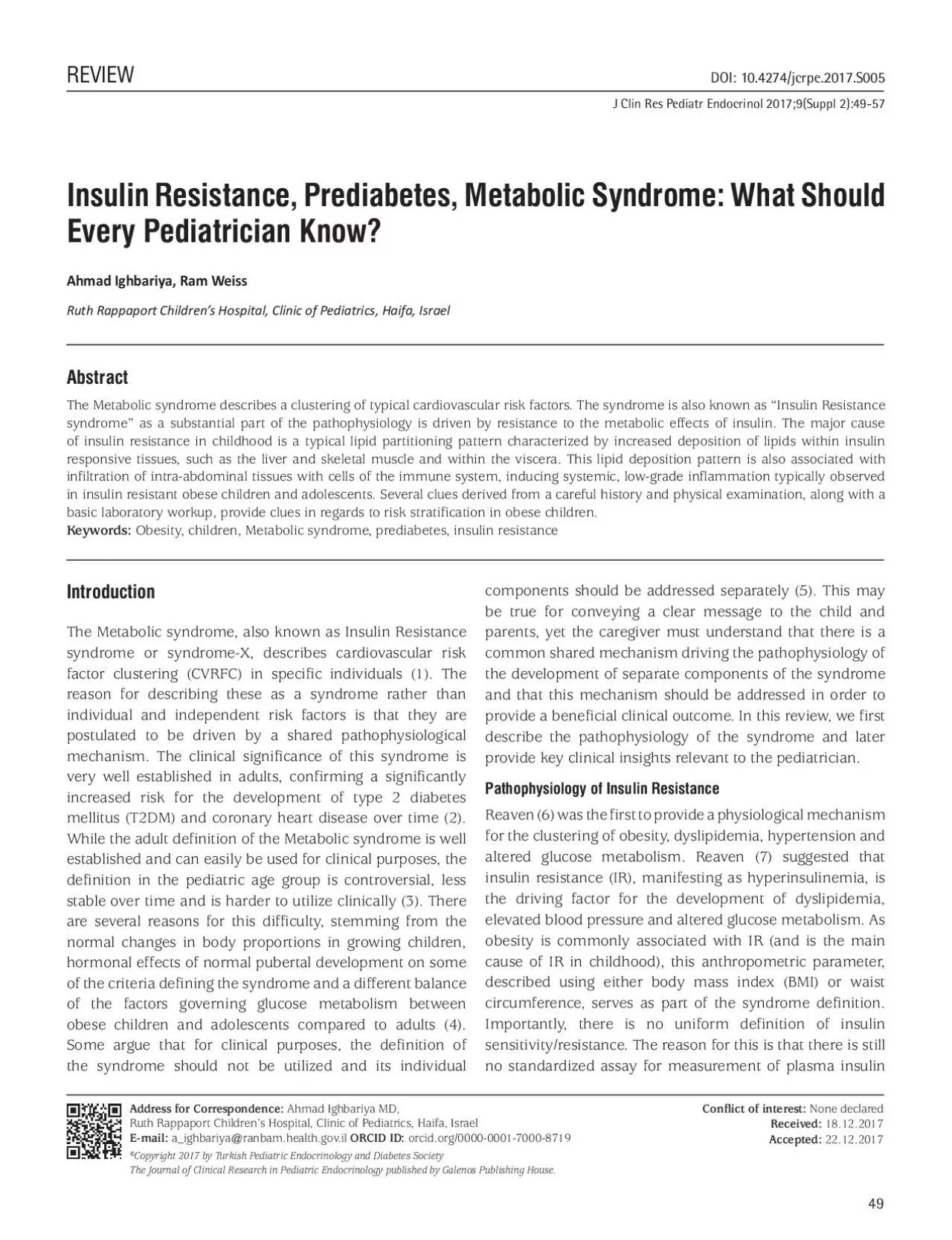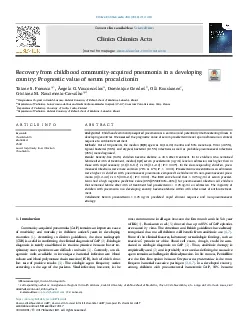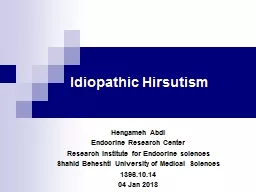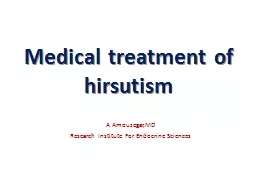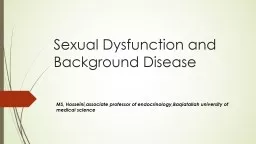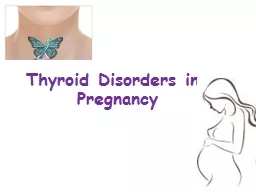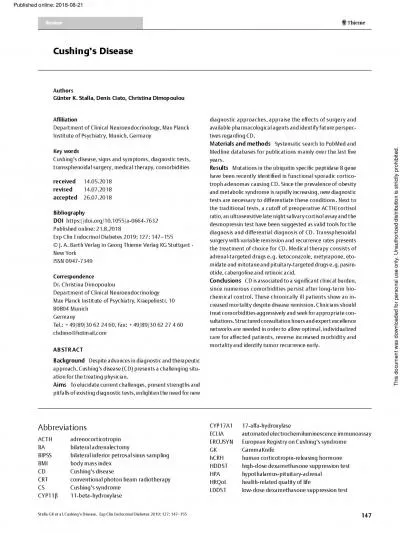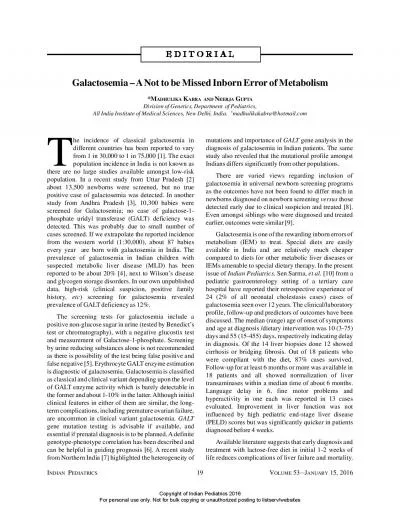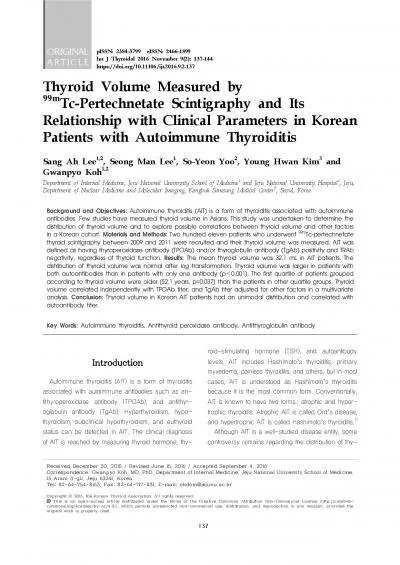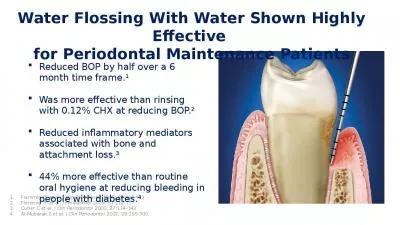PDF-J Clin Res Pediatr Endocrinol 20179Suppl 24957
Author : emmy | Published Date : 2022-09-03
49 Introduction The Metabolic syndrome also known as Insulin Resistance syndrome or syndromeX describes cardiovascular risk factor clustering CVRFC in specific individuals
Presentation Embed Code
Download Presentation
Download Presentation The PPT/PDF document "J Clin Res Pediatr Endocrinol 20179Suppl..." is the property of its rightful owner. Permission is granted to download and print the materials on this website for personal, non-commercial use only, and to display it on your personal computer provided you do not modify the materials and that you retain all copyright notices contained in the materials. By downloading content from our website, you accept the terms of this agreement.
J Clin Res Pediatr Endocrinol 20179Suppl 24957: Transcript
Download Rules Of Document
"J Clin Res Pediatr Endocrinol 20179Suppl 24957"The content belongs to its owner. You may download and print it for personal use, without modification, and keep all copyright notices. By downloading, you agree to these terms.
Related Documents

